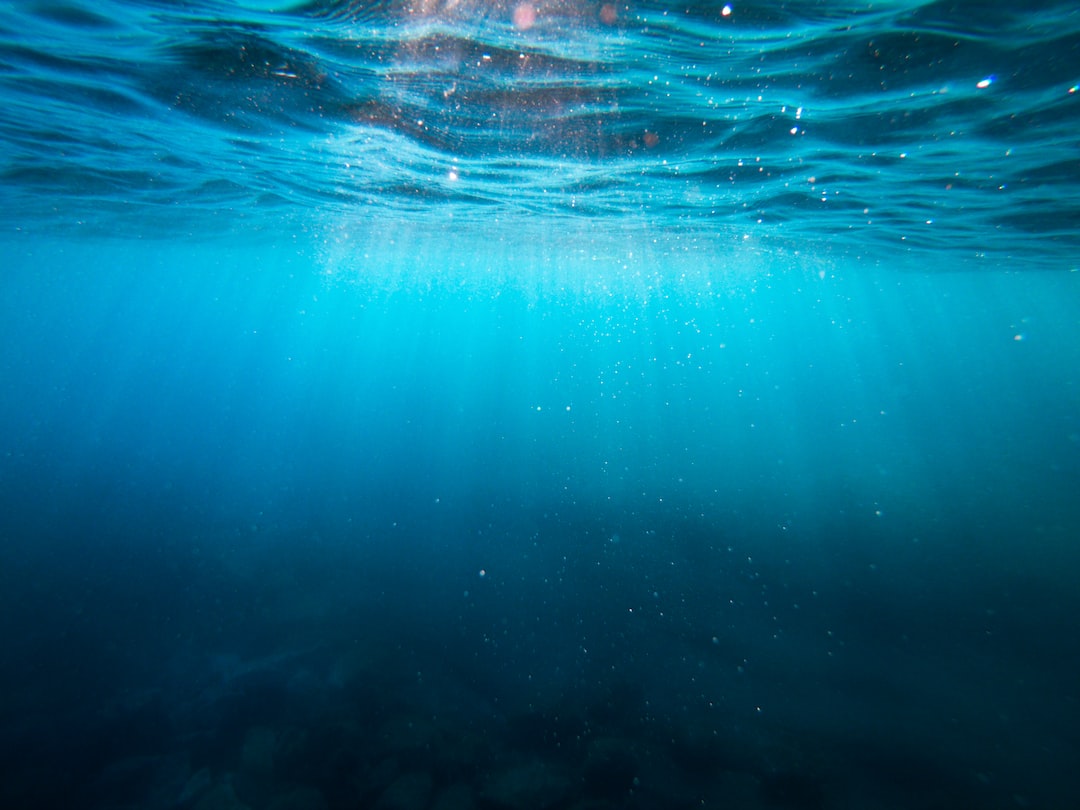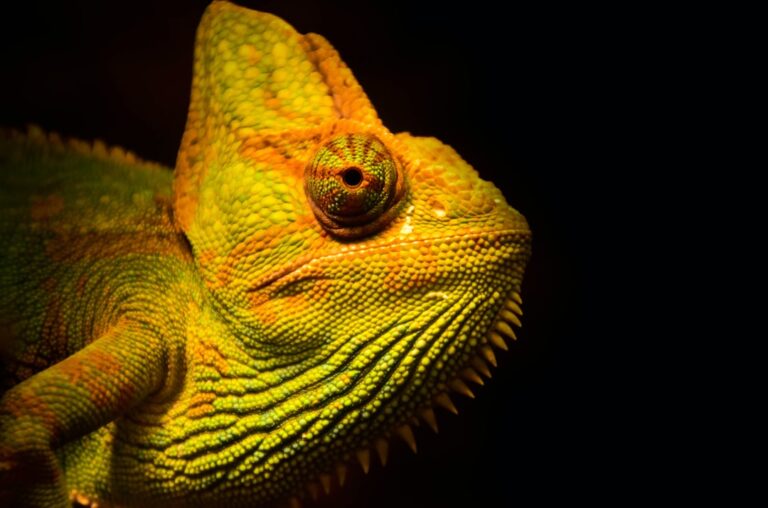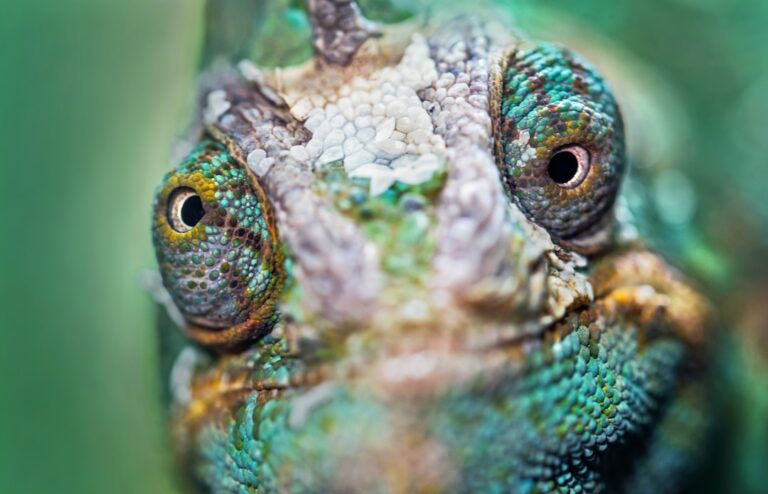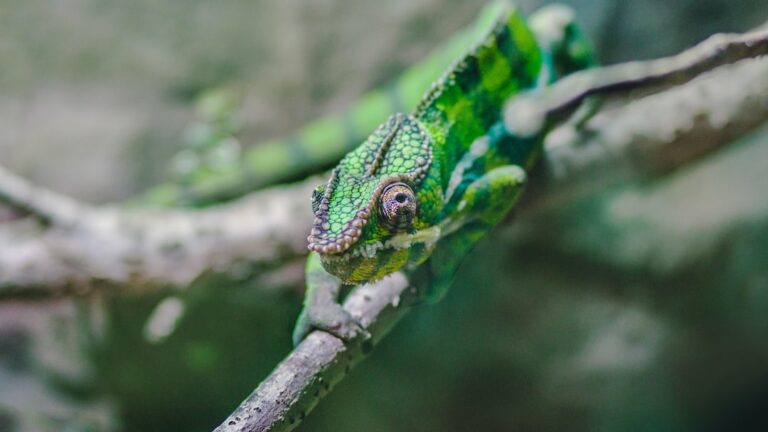Can Chameleons Breathe Underwater?
Chameleons are fascinating creatures known for their ability to change color and blend into their surroundings. However, there is much more to these reptiles than meets the eye. One aspect of chameleon biology that is often overlooked is their unique respiratory system. Understanding how chameleons breathe is not only important for scientific research, but also for their conservation and well-being in captivity.
Table of Contents
The Basics of Chameleon Respiration
Chameleons, like other reptiles, have lungs that allow them to breathe air. They take in oxygen and release carbon dioxide through a process called respiration. However, unlike mammals, chameleons do not have a diaphragm to help them breathe. Instead, they rely on the expansion and contraction of their ribcage to move air in and out of their lungs.
Chameleons have a relatively low metabolic rate compared to mammals, which means they do not require as much oxygen to sustain their bodies. This is due to their slow movement and ability to conserve energy. Their respiratory system is adapted to meet these needs, allowing them to efficiently extract oxygen from the air.
The Myth of Chameleons Breathing Underwater
There is a common myth that chameleons can breathe underwater. This misconception likely stems from the fact that chameleons are often found in humid environments and are capable of drinking water through their mouths. However, it is important to note that chameleons cannot breathe underwater.
Chameleons do not have gills or any other adaptations for extracting oxygen from water. Their respiratory system is specifically designed for breathing air. While they may be able to hold their breath for short periods of time, they cannot survive underwater for extended periods.
Understanding Chameleon Lung Anatomy
To understand why chameleons cannot breathe underwater, it is important to understand their lung anatomy. Chameleons have relatively small lungs compared to their body size. Their lungs are elongated and extend along the length of their body, allowing for increased surface area for gas exchange.
Unlike mammals, chameleons do not have a diaphragm to help them breathe. Instead, they rely on the expansion and contraction of their ribcage to move air in and out of their lungs. This unique lung anatomy is one of the reasons why chameleons cannot adapt to breathing underwater.
The Importance of Air for Chameleons
Air is essential for chameleon survival. Like all animals, chameleons need oxygen to fuel their metabolism and carry out essential bodily functions. Without access to air, chameleons would not be able to survive.
In addition to providing oxygen, air also plays a crucial role in regulating temperature and humidity for chameleons. Chameleons are ectothermic, which means they rely on external sources of heat to regulate their body temperature. By basking in the sun or seeking shade, chameleons can adjust their body temperature as needed. Air circulation also helps to prevent the buildup of moisture on their skin, which can lead to respiratory infections.
The Evolution of Chameleon Respiration
Chameleon respiration has evolved over millions of years to meet the unique challenges of their environments. Chameleons are primarily found in tropical and subtropical regions, where air quality and humidity levels can vary greatly. Their respiratory system has adapted to allow them to thrive in these diverse habitats.
One key adaptation is the ability to breathe through their skin. Chameleons have specialized skin cells called dermal papillae that allow them to absorb oxygen directly from the air. This adaptation helps them survive in environments with low oxygen levels or high humidity.
Another adaptation is the ability to adjust their breathing rate and depth based on environmental conditions. Chameleons can slow down their breathing to conserve energy during periods of low activity, and increase their breathing rate when they need to cool down or engage in physical activity.
The Limits of Chameleon Adaptation
While chameleons have evolved many unique adaptations to survive in their environments, there are limits to what they can adapt to. Breathing underwater is one of those limits. Chameleons do not have the physiological adaptations necessary to extract oxygen from water, such as gills or specialized respiratory structures.
Chameleons are highly specialized reptiles that have evolved to thrive in specific habitats. Their respiratory system is finely tuned to meet the demands of their natural environment, but it is not adaptable enough to allow them to breathe underwater.
The Dangers of Water for Chameleons
Water poses several dangers for chameleons. One of the biggest risks is drowning. Chameleons are not natural swimmers and do not have the ability to stay afloat or move efficiently in water. If a chameleon were to fall into a body of water, it would likely struggle to stay above the surface and could easily drown.
In addition to the risk of drowning, water can also lead to respiratory infections in chameleons. Chameleons have delicate respiratory systems that are sensitive to changes in humidity and temperature. Excessive exposure to water can lead to respiratory problems and potentially life-threatening infections.
The Role of Moisture in Chameleon Health
While chameleons cannot breathe underwater, moisture does play an important role in their overall health and well-being. Chameleons come from humid environments and require adequate moisture levels to maintain healthy skin and prevent dehydration.
In their natural habitats, chameleons obtain moisture from sources such as dew, rain, and plant leaves. They may also drink water droplets that collect on surfaces or lick moisture from their bodies. In captivity, it is important to provide chameleons with access to clean water and maintain appropriate humidity levels in their enclosures.
The Truth About Chameleon Survival in Water
While chameleons cannot breathe underwater, there have been rare instances where they have been observed in water. These observations are typically limited to situations where chameleons are forced into water due to flooding or other environmental factors.
In these situations, chameleons are able to survive for short periods of time by holding their breath and using air trapped in their lungs. They may also use their tails as a flotation device to stay above the water’s surface. However, these instances are not indicative of chameleons’ natural abilities or adaptations.
Protecting Chameleons in Their Natural Habitats
Chameleons face numerous threats in their natural habitats, including habitat loss, climate change, and illegal pet trade. Conservation efforts are crucial to protect these unique reptiles and ensure their survival for future generations.
Conservation organizations work to preserve chameleon habitats, educate local communities about the importance of conservation, and enforce laws against the illegal trade of chameleons. Supporting these efforts through donations or volunteering can make a significant impact in protecting chameleons and their environments.
Understanding how chameleons breathe is essential for their conservation and well-being. Chameleons cannot breathe underwater and rely on air for survival. Their respiratory system has evolved over millions of years to meet the unique challenges of their environments.
While chameleons may be able to survive in water for short periods of time, it is important to remember that this is not their natural habitat or adaptation. Water poses significant risks to chameleons, including drowning and respiratory infections.
By supporting conservation efforts and raising awareness about the importance of protecting chameleons and their habitats, we can ensure the survival of these incredible reptiles for generations to come.
If you’re curious about the unique abilities of chameleons, you might also be interested in learning about whether they can breathe underwater. Reptile Friend has an informative article on this topic that explores the fascinating respiratory system of chameleons. To find out more, check out their article on Can Chameleons Breathe Underwater?







